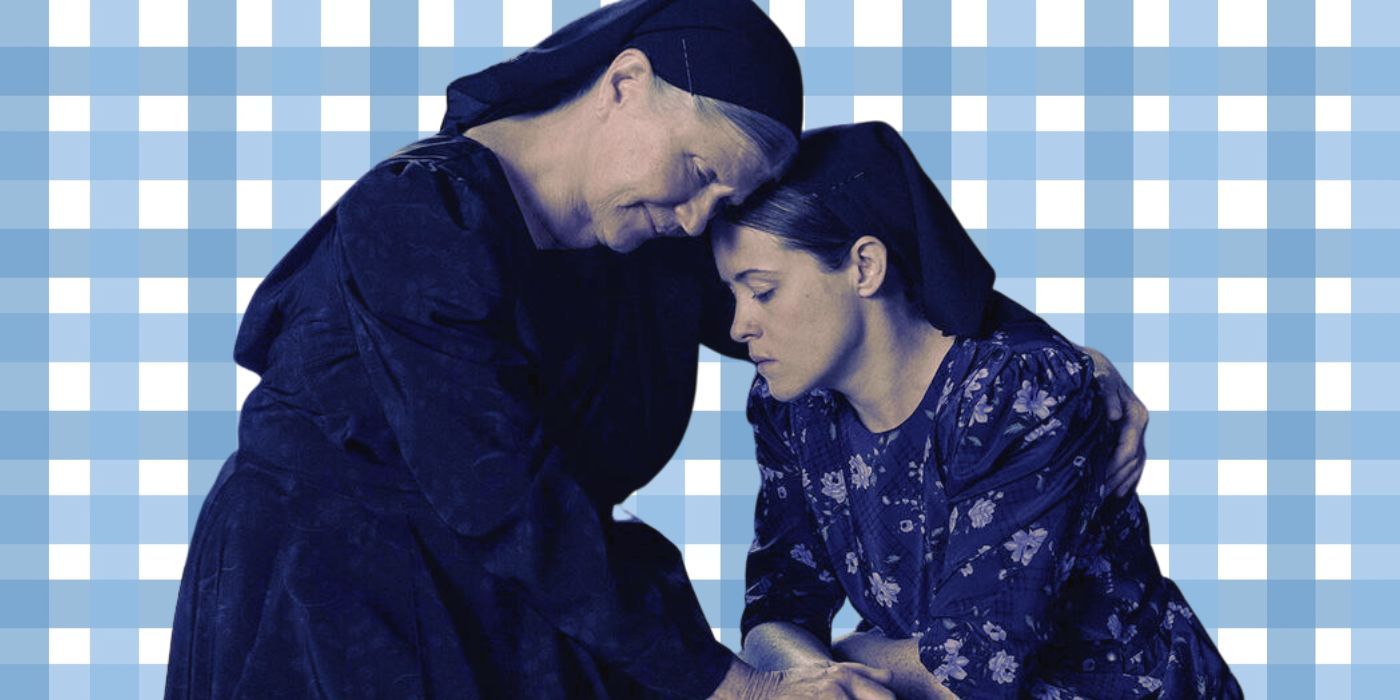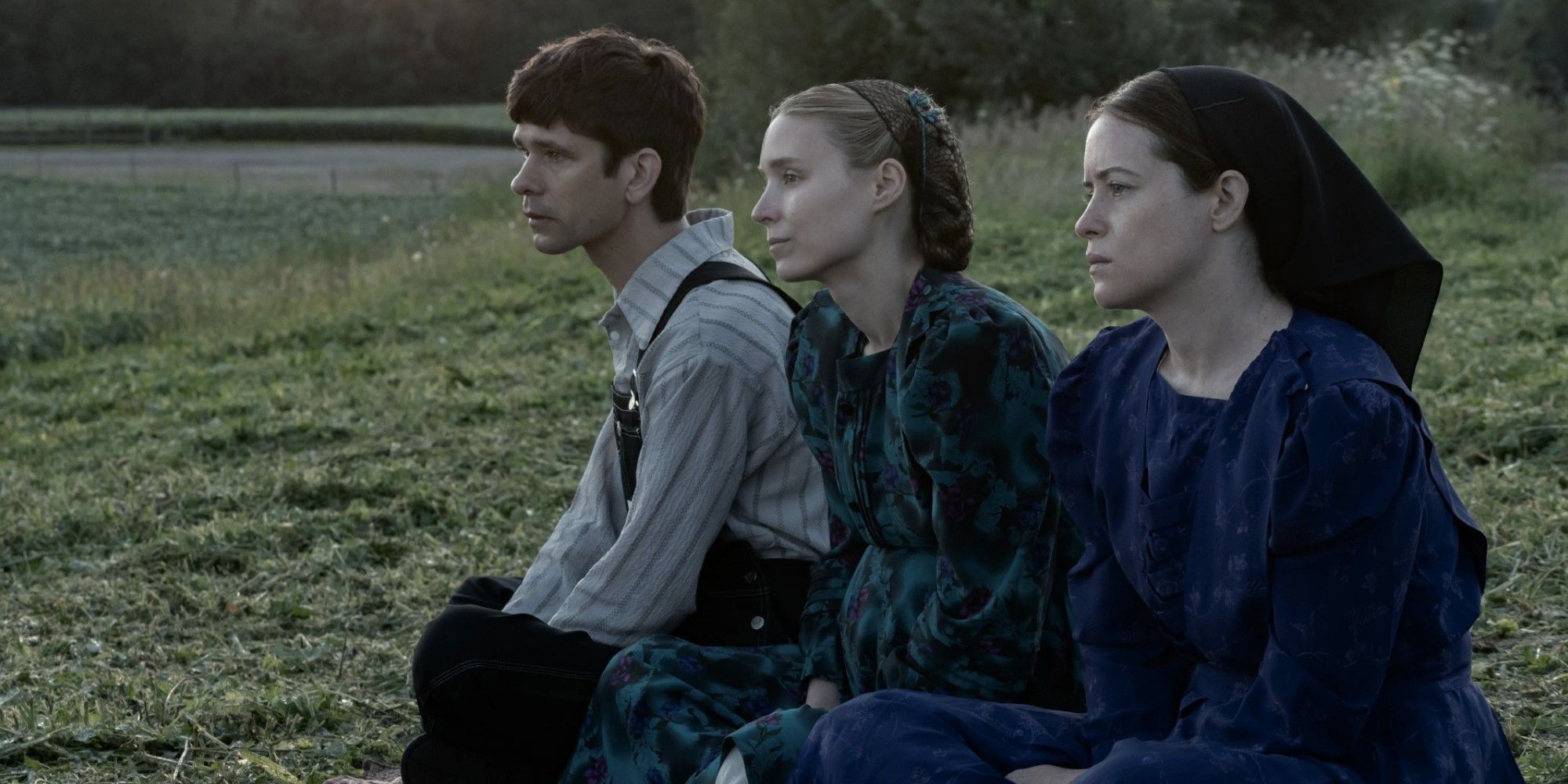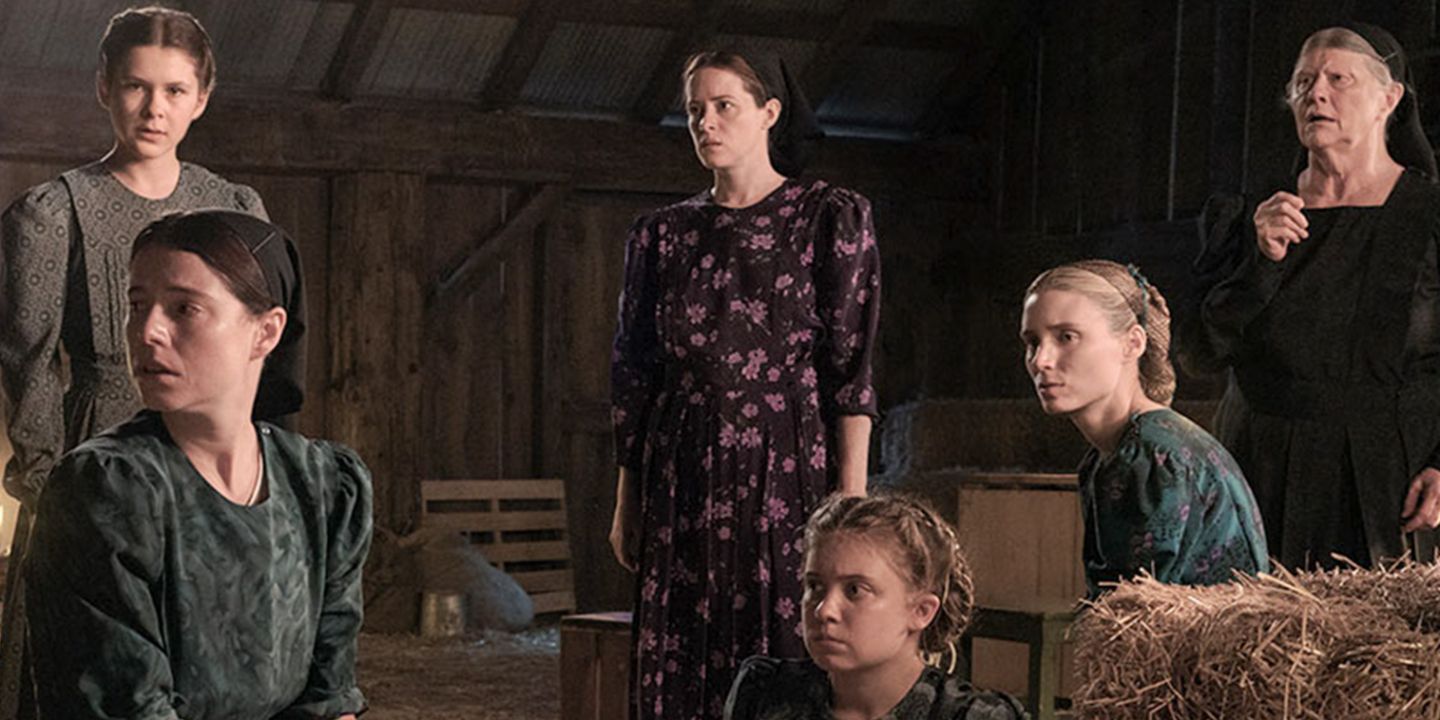Without question, Women Talking is a victory for women’s representation both in front of and behind the camera. The film’s principal ensemble is made up almost entirely of women performers, including Rooney Mara, Claire Foy, Jessie Buckley, Judith Ivey, Sheila McCarthy, and Frances McDormand, who also serves as a producer. The film is directed by Sarah Polley, who also adapted the screenplay from the novel of the same name by author Miriam Toews. As the near-universal acclaim from critics and the Oscar nomination for Best Picture indicate, Women Talking is a commanding example of the power of women’s cinematic storytelling. But beyond the talent involved in making the film, Women Talking also demonstrates the power of women’s storytelling from within the world of the film itself.
What Is 'Women Talking' About?
The film centers on the women and girls of a rural, remote Mennonite colony discussing their future. The women and girls have been repeatedly drugged and sexually assaulted by the colony’s men, who have now traveled to the city to post bail for the arrested perpetrators. The women hold a vote to determine if they should do nothing, stay and fight the men, or leave and form a new colony. The vote comes to a tie between fighting and leaving, and three families are elected to resolve the tie. The majority of the film’s runtime is dedicated to this conference, as the families discuss the expectations and consequences of each option. While some of the debate is polemical, much of the conversation is carried by the women’s storytelling.
Storytelling Allows the Women to Better Understand Each Other
Three types of women’s storytelling are of particular importance to the conference. Firstly, the women orate biographical accounts of their experiences to one another. When Salome (Foy) mentions that she needs to give her daughter Miep (Emily Mitchell) antibiotics, the other women ask how Salome was able to acquire medicine from outside the colony. Her mother Agata (Ivey) recounts how Salome carried Miep on her back for days to reach a local clinic. As Agata tells this story, the film cuts to Salome carrying her injured daughter. The film thus supports Agata’s storytelling with visualization, representing the visualization that takes place in each of the other women’s minds. Agata’s story depicts Salome’s plight after her daughter was assaulted. Though none of the women are depicted as doubting Salome’s love for her daughter, this story fills the silences left by not speaking about such an issue and allows each of the women—particularly Mariche (Buckley)—to reconsider Salome’s rage. Throughout the film, each of the women has similar opportunities to tell their stories and the stories of their families, which allows the other women to better understand not only the storyteller but the stakes of their decision.
Sharing Allegories Leads the Women to Agree on a Decision
Secondly, allegorical stories are shared to help the women come to their decision. Allegories are primarily told by Greta (McCarthy) in the form of stories about her horses, Ruth and Cheryl. The first story she tells is about the horses’ response to being frightened by the colony’s dogs. In the presence of great fear, the horses bolt, veering off their predetermined path. Greta uses this allegory to consider why the women might consider leaving the colony—perhaps in the presence of danger, running is the best option. This story starts a lively debate about Greta’s word choice, but she returns to making her most significant point: if the women are being treated like animals, why not respond like animals? Later, Greta tells another similar story in which the conditions of the road make it difficult for the horses to maintain their path. Greta says that instead of focusing on the immediate piece of the road in front of her, she can regain control if she focuses on where she is going. Here, she allegorizes how women can control their destiny: by focusing on the path ahead, not the one they can see right now. Through these stories, the women’s perspectives shift and contribute to their eventual decision to leave the colony.
Storytelling Can Immortalise Women's Experiences and Save Their Lives
The creation of new narratives comprises the third form of storytelling. Within the conference, the women ask August (Ben Whishaw), the schoolteacher, to take the minutes of the meeting. As the women are preparing to leave the colony, August attempts to give Salome the compiled minutes. She stops him, saying, “The purpose was for you to take the minutes.” The minutes of the meeting do not serve as notes for the women to review, but as a new story that August can keep in the colony. As the colony’s women and girls are not taught to read and write, it is assumed that the material read and taught to the boys in school does not reflect women’s experiences. The minutes, then, offer a new narrative that can be used to help the boys unlearn their generational misogyny.
The entirety of the film’s events also works as the creation of a new story, as the film is structured through a frame narrative. Women Talking opens with a line of narration by Autje (Kate Hallett): “This story ends before you were born.” The narrative structure thus contributes to the film’s depiction of women’s storytelling as the events depicted on screen are understood to be part of Autje’s story. The narration adds further complexity to the plot, as Autje contributes significant reflections on the conference’s proceedings. For example, she describes how when the women looked back, they could see the breadcrumbs suggesting the men were assaulting the women. However, because their stories had never been told, the women did not have the language to discuss what was happening. The narration thus creates a dual argument for the significance of women’s storytelling: through these stories, women can understand the past, as well as envision their new future. Autje’s narration encapsulates this idea in the final line of the film, “Your story will be different from ours.”
'Women Talking's Message Comes From Both Inside and Outside the Narrative
Not only do these three forms of storytelling lead to the women’s eventual decision to leave the colony, but their potential is also inspiring to the other women and girls in the colony who join them. This is most stridently depicted through the family of Janz (McDormand). Though initially a part of the conference, Janz forcefully removers herself, her daughter, Anna (Kira Guloien), and her granddaughter, Helena (Shayla Brown), from the conference when the other women will not consider forgiving the men and staying in the colony. Anna hesitates, suggesting that she would prefer to fight or leave. At the end of the film, as the women ready their carriages, Anna and Helena rush to the buggies and join their endeavor. Though they did not hear the women’s stories directly, they are inspired by the potential women’s storytelling has for their futures.
There are a number of ways Women Talking can be interpreted as an allegory for contemporary gender politics, but it is outside the scope of this feature to consider them all. However, one particularly noteworthy interpretive avenue is to consider the film as an allegory for women’s cinematic storytelling. The women of the colony are historically deprived of the language to render their stories in words. Women directors and screenwriters have faced similar exclusion in the history of Hollywood filmmaking. It is only through their storytelling that the women of the colony are able to envision and create their future. As seen with Anna and Helena, these accounts are inspirational to women who wish to be a part of that future. For women filmmakers, then, Women Talking argues that women’s cinematic storytelling inspires other women filmmakers to tell their stories through film. Women Talking demonstrates the power of women behind the camera and within its narrative, and works as a form of inspiration for women storytellers of the future.



